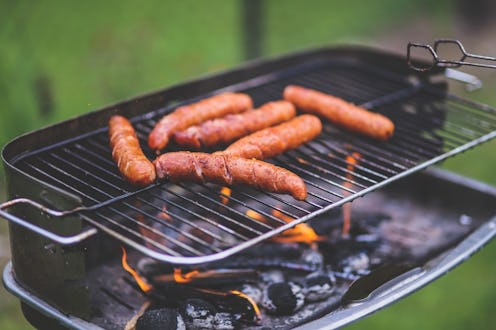
Well, we did it. We survived another summer. Labor Day is upon us, bringing with it the unofficial start of fall. And I, for one, could not be more excited to trade in hot, sticky days for crisp, cool ones. But, uh, what is Labor Day, exactly? I mean, what are we celebrating, other than an excuse to stay home from work and day drink with our friends? Not to bore you with a long, drawn-out history lesson or anything, but the Labor movement in our country has a rich and important past. And while Labor Day is absolutely a reason to kick back, relax, and enjoy the final days of warm sunshine with one last trip to the beach or a backyard barbecue, it's also a time to reflect on the value of hard work, and how it's shaped America.
So as you're sitting in your lawn chair waxing poetic about the things you wish you had crossed off your summer bucket list when you had the chance, use some of your free time to brush up on just what this end-of-summer holiday is all about. It's an important holiday to be sure, but for many more reasons than you think. Here are seven facts you may not have known about how and why we celebrate Labor Day.
1. Labor Day Has Been A National Holiday Since 1894
President Grover Cleveland officially signed a bill making Labor Day a federal holiday in 1894 — although at that point, 30 different states already celebrated some type of observance. The first nationally recognized Labor Day was celebrated with parades that displayed the "strength" of labor organizations, as well as day-long festivals.
2. It Always Falls On The First Monday In September
Although Labor Day wouldn't become a national holiday until 1894, the Central Labor Union observed its very first Labor Day in New York City on Sept. 5, 1882 (which was a Tuesday, interestingly enough). While many countries celebrate International Workers' Day in May, President Cleveland didn't want to commemorate Labor Day in the spring. It was too close to the anniversary of the Haymarket massacre in Chicago, that took place on May 4, 1886. On that day, at least 11 people were killed during what was supposed to be a peaceful labor demonstration.
3. Americans Used To Work Crazy Long Days
Feeling overworked? Throughout the Industrial Revolution, Americans on average were working 12-hour days, seven days a week. Kinda makes you feel bad about complaining every time you have to stay past 5 p.m., right?
4. It's Not Actually The Last Day Of Summer
Everyone always makes a big deal about how Labor Day represents the end of summer, but you actually have a few more weeks to soak up the sun before the real end of the season befalls us. This year, the autumnal equinox begins Sept. 23, which means you have plenty of time to squeeze in a few more lazy afternoons by the pool.
5. It's One Of The Year's Biggest Weekends For Retailers
Labor Day sales are second only to those on Black Friday, which is awesome for those of us looking to get our hands on a good deal. But it's also slightly ironic when you think about the workers who have to spend their Labor Day putting in extra hours to keep things running smoothly during a day that's supposed to represent rest.
6. Labor Day Is The Second-Most-Popular "Beef" Day Of The Year
Labor Day ties with the Fourth of July as the second-most-popular day of the year on which to eat beef. Memorial Day is number one.
7. You Can Wear Whatever Color You Want After Labor Day
To be fair, there was a time when it didn't make sense to wear white after Labor Day. But that was back when people didn't have things like heating and air conditioning, and it was simply cooler to wear lighter colors in the summer. But as a fully functioning society with modern-day conveniences, I think we can safely kiss those "rules" goodbye. Be it summer or fall, just do you. Wear whatever the heck you want.
Images: Pexels; Giphy (3)